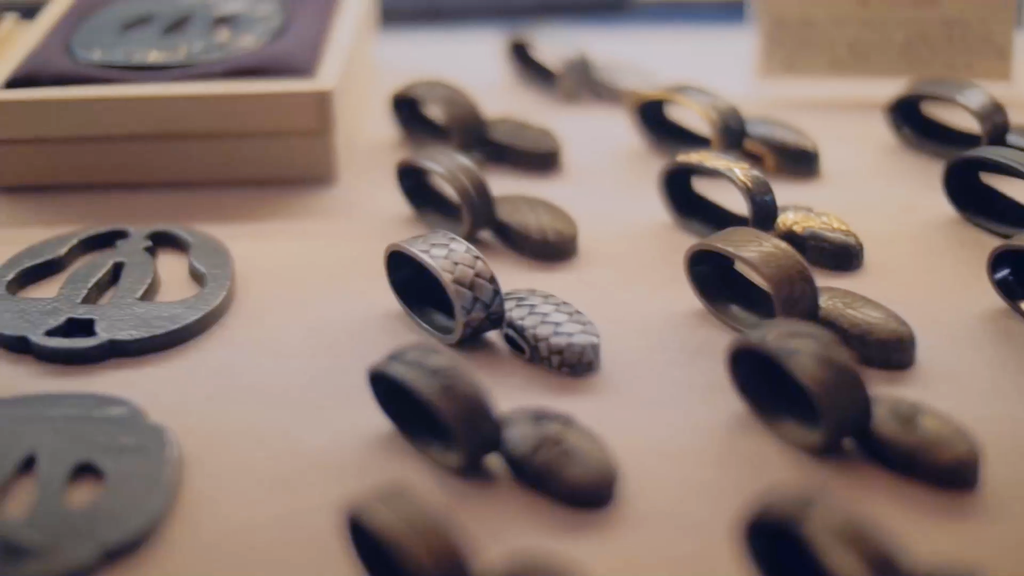What is Fuchi-gashira?

Fuchi-gashira is a decorative metal fitting attached to the handle of a Japanese sword. It is a general term for two metal fittings: the Tsukagashira (commonly known as "kashira") attached to the end of the handle, and the Fuchigane (commonly known as "fuchi") attached to the the tsuba side of the handle. These metal fittings serve to reinforce each part of the handle and come as a pair. Initially, the tsukagashira and the fuchigane metal fittings were decorated differently, but gradually the same patterns were applied to both, and the two became known as Fuchi-gashira as a pair.
The fuchi-gashira, like the tsuba and menuki, are the most conspicuous parts of the sword, especially the hilt, which is the first part seen when the sword is worn at the waist. The skill and sense of the craftsman can be enjoyed through the intricate carving and inlay of the metal fittings, and some are also valuable as works of art in their own right.
Tsukagashira

The purpose of the tsukagashira is to hold the cord firmly in place so that it will not come undone when it is wrapped from the fuchigane side. Its history is long, and swords such as "Warabiteto" and "Ryugozukato" with a unique design on the tip of the handle were made in the Kofun period. Later, when decorated swords for ceremonial use appeared, it became the norm to decorate the tips of the hilt with gold or silver. Then, when warriors began to handle swords in actual battle, oval-shaped metal fittings were fitted to increase strength. The material of the hilt is generally made of metal such as iron, red copper, or brass, but sometimes buffalo horn is used, as in the case of Tensho Koshirae.
Fuchigane

Fuchigane is a metal fitting that is attached to the other side of the handle, and its main function is to protect the side of the handle that is in contact with the tsuba, called the tsuka-guchi. It also has the role of improving the appearance of the handle by covering the part where the cord wrapping begins. On a properly wrapped tsuka, the tsuka cords are smoothly leveled against the fuchigane. Since there are various decorations on the fuchigane, the size can vary. Therefore, if a large fuchigane is selected, the handle also tends to be larger, while a handle with a small fuchigane attached is relatively small. In other words, it is important to select the appropriate fuchigane for those who want to value the sense of grip in iai and batto.

Leave a comment: